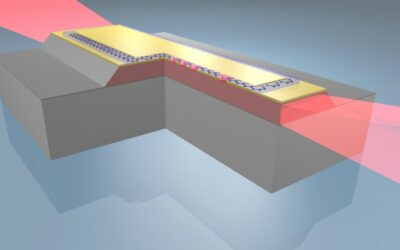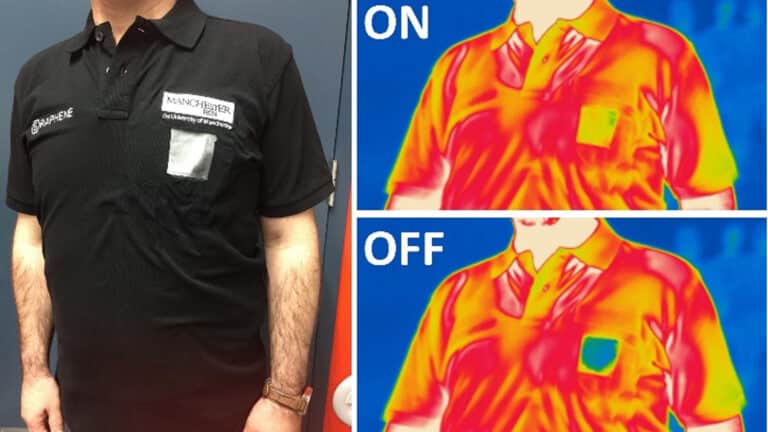Scientists from the University of Manchester’s National Graphene Institute have created prototype smart textiles which can lower the body temperature.
They say the development opens the door to interactive infrared displays, covert infrared communications on textiles and even new forms of satellites.
The science behind it comes from the fact that the human body radiates energy in the form of electromagnetic waves in the infrared spectrum. In a warmer climate you’d want to make full use of the infrared radiation, to lower the body temperature. This can be done through infrared-transparent textiles.
In colder climates, infrared-blocking covers are used to minimise the energy loss from the body – for example emergency blankets.
The team of scientists electrically tuned the infrared emissivity (the ability to radiate energy) of graphene layers integrated onto textiles.
To demonstrate the technology, they used a t-shirt which allowed the wearer to project coded messages which were only readable by infrared cameras.
“Ability to control the thermal radiation is a key necessity for several critical applications such as temperature management of the body in excessive temperature climates,” said Professor Coskun Kocabas.
“Thermal blankets are a common example used for this purpose. However, maintaining these functionalities as the surroundings heats up or cools down has been an outstanding challenge.”
The same group of scientists have already used graphene to create “thermal camouflage” to fool infrared cameras.
“We believe that our results are timely showing the possibility of turning the exceptional optical properties of graphene into novel enabling technologies. The demonstrated capabilities cannot be achieved with conventional materials,” continued Kocabas.
“The next step for this area of research is to address the need for dynamic thermal management of earth-orbiting satellites. Satellites in orbit experience excesses of temperature, when they face the sun and they freeze in the earth’s shadow. Our technology could enable dynamic thermal management of satellites by controlling the thermal radiation and regulate the satellite temperature on demand.”











